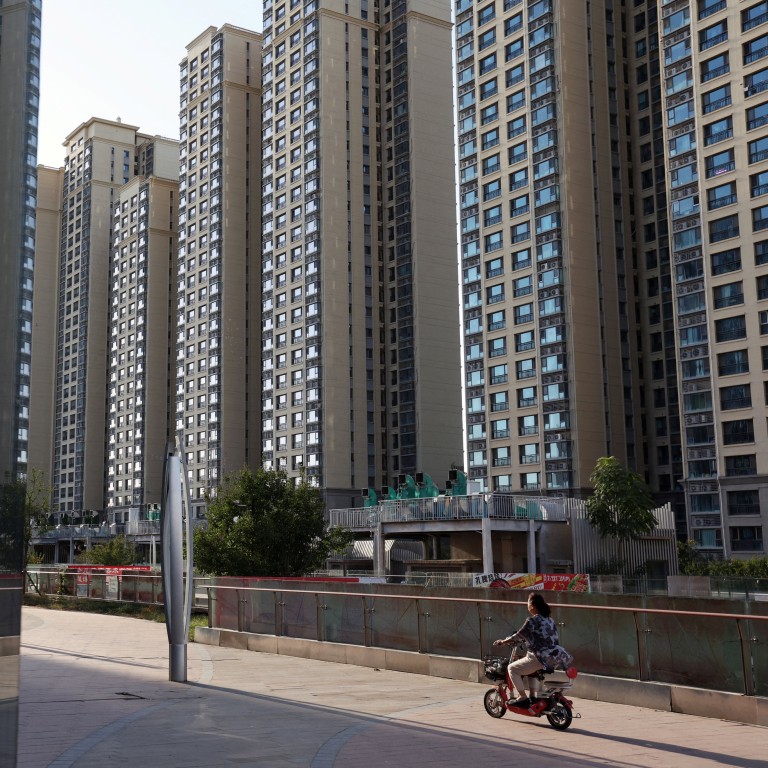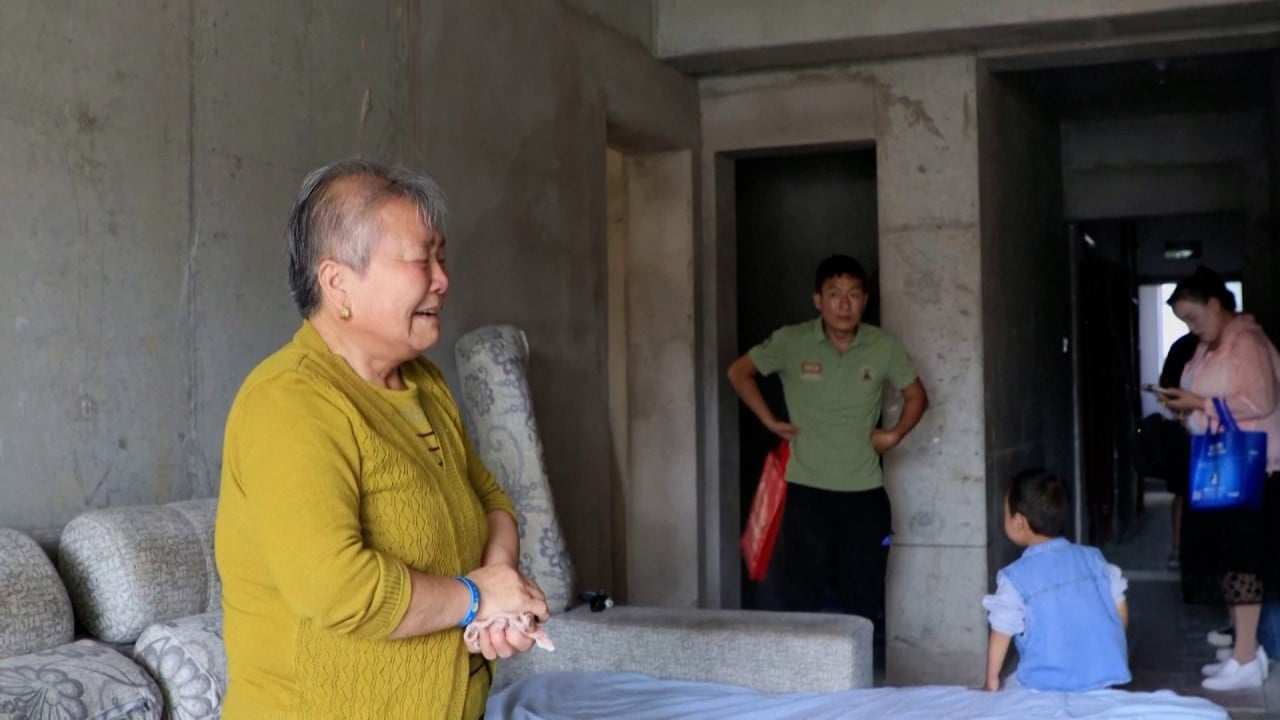
China’s property woes test Beijing’s bottom line of no systemic risks, with Evergrande restructuring adding to problems
- Post review of midyear financial reports by 18 ‘systemically important’ banks finds more than two-thirds have higher outstanding non-performing property loans
- Trend shows how property crisis has outsized effect on China’s economy; one analyst warns the actual amount of distressed loans may be much higher than reported
The outstanding property-related non-performing loans (NPLs) of China’s top banks saw an annual increase in value of 37 per cent to 291 billion yuan (US$40 billion) from July 2022 to the end of June this year, according to the Post’s calculations of their midyear financial reports.
Two-thirds of the banks have seen an increase in their property NPL ratio, signalling that they are still troubled by China’s ongoing property crisis.
The People’s Bank of China last week identified 20 banks as being systemically important. This means that their impact, in the event of distress or failure, could significantly disrupt the financial system and, ultimately, the broader economy. Newly added to the list this year is the Bank of Nanjing.
Hong Kong developer calls for review of stifling property curbs to end the rot
The Post reviewed 18 of the 20 banks, as Guangfa Bank and Bank of Beijing did not release midyear property-loan breakdowns.
The Industrial and Commercial Bank of China (ICBC), China’s largest by asset size, and the Agricultural Bank of China have the highest NPL ratio in the real estate sector, reaching 6.7 and 5.8 per cent, respectively, according to their interim reports.
The average property-related NPL ratio in China’s four largest state-owned banks, which also include the Bank of China and China Construction Bank, reached 5.6 per cent, up from 4.5 per cent in the first half of last year.
The “big four” banks, which account for the majority of China’s bad property loans, are also classified as “global systemically important banks” by the Bank for International Settlements, a global group that supports the world’s central banks.
Some of the other banks, including Huaxia Bank, China Merchants Bank, China Citic Bank and China Minsheng Bank, reported more than 2 percentage points increases in their NPL ratios for property-related loans.
Meanwhile, Chinese commercial banks’ overall NPL ratio was 1.62 per cent at the end of June, dropping slightly from 1.67 last year. In comparison, American banks saw their bad-loan ratio surge during the subprime mortgage crisis, rising from 1.4 per cent at the end of 2007 to 4.96 per cent in 2009.
Zhang Xiaoxi, a China finance analyst with research firm Gavekal Dragonomics, warned that the actual amount of distressed loans could be much higher than the reported NPLs indicate.
Banks could have been selling off or otherwise disposing of bad loans, instead of holding them on the balance sheet, Zhang said in a note earlier this month. Meanwhile, regulatory forbearance during the pandemic also allowed banks to avoid recognising some distressed loans.
“Those distressed assets, plus lower lending rates imposed to support the economy, will erode profitability and put downward pressure on capital buffers in the months ahead,” Zhang said.
The NPL ratio in the real estate industry has increased, but it accounts for a low proportion of overall loans
Analysts say it could take years for the country’s state-controlled financial institutions to fully digest distressed property-related debt.
Most top banks have reduced their proportion of real estate loans among their total loans. An exception is the Bank of Ningbo, which lent 57 billion yuan more to developers from July 2022 to June 2023, resulting in its proportion of real estate loans more than doubling to 8.2 per cent of its total loans.
Citic Bank and Bank of Shanghai have the largest exposure to property, as their lending to developers reached 10.3 and 9.02 per cent of their total loans, respectively.
Meanwhile, loans to developers continue to grow. In the first half of 2023, the total value of loans in the real estate sector was 6.7 trillion yuan for those 18 banks, up 6 per cent from the same period last year.
“The NPL ratio in the real estate industry has increased, but it accounts for a low proportion of overall loans, and provisions are sufficient,” Wang Jingwu, vice-president of ICBC, said at an August 30 press conference while discussing the first-half results.
“So, the impact on profitability is limited, and the overall risk is under control.”
How bet on China’s small cities proved to be Country Garden’s undoing
Agricultural Bank of China will “provide reasonable extensions and adjustments to repayment plans for developers”, its vice-president, Liu Jiawang, said on August 29.
Goldman Sachs analysts warned last month that distress in China’s property market could trigger 1.9 trillion yuan worth of credit losses, and that banks could shoulder more than 60 per cent of the losses.
The banking sector accounted for 75 per cent of debts owed by real estate developers, totalling 19.3 trillion yuan at the end of June last year, the US investment bank said in a report.
Moody’s analysts, however, said funding and liquidity will remain ample in the next 12-18 months in the “big four” state-owned banks.


